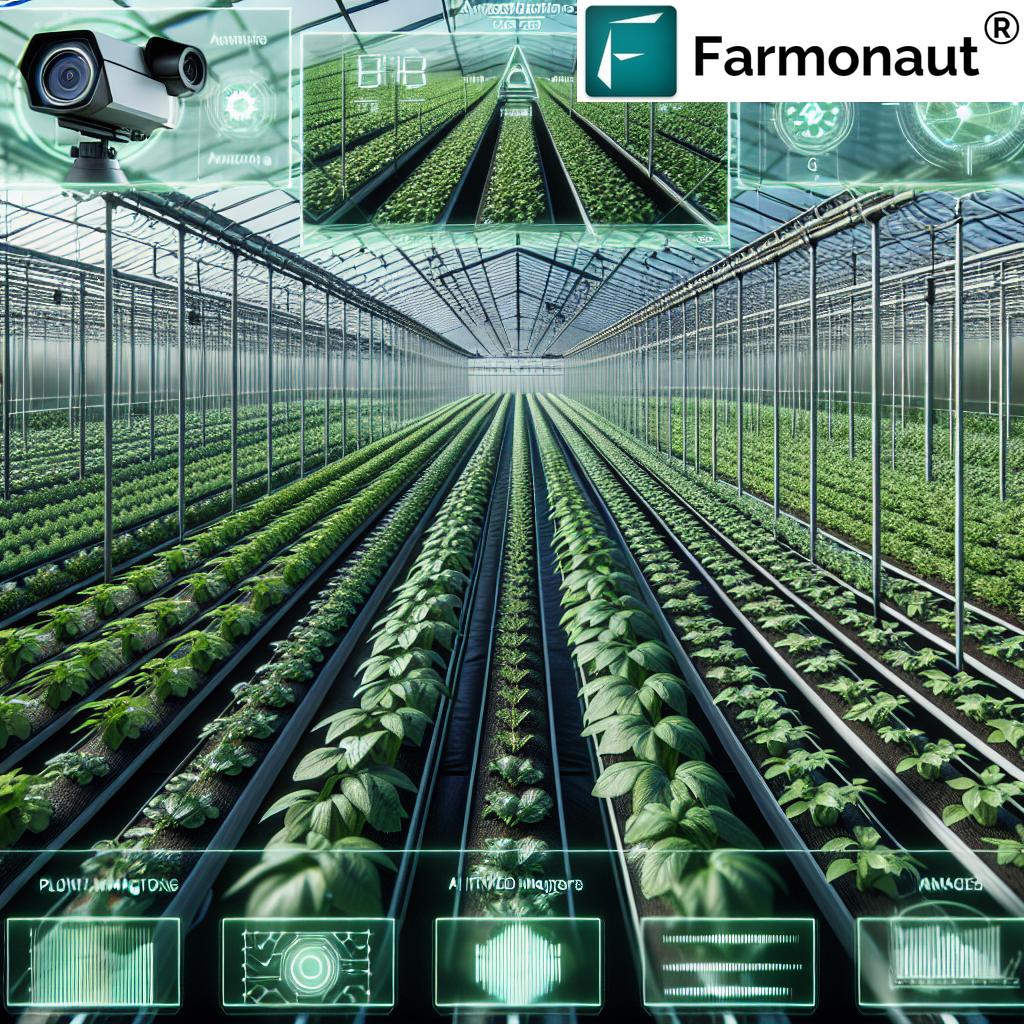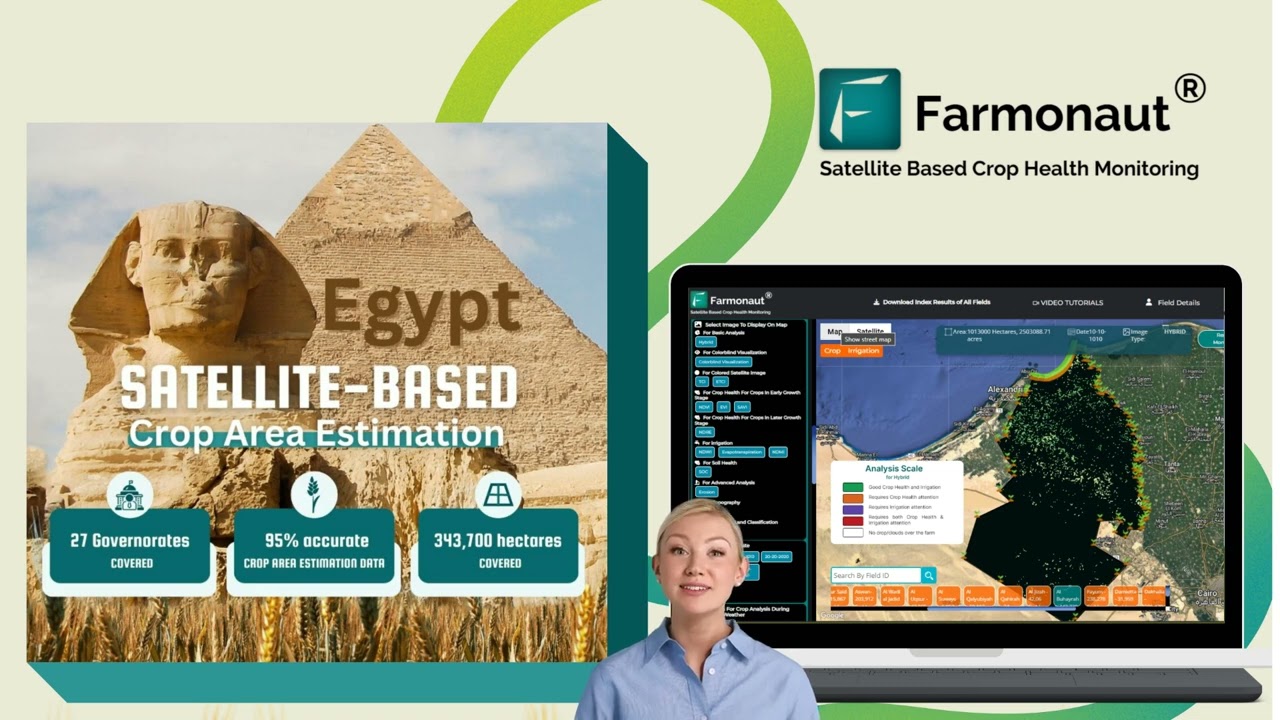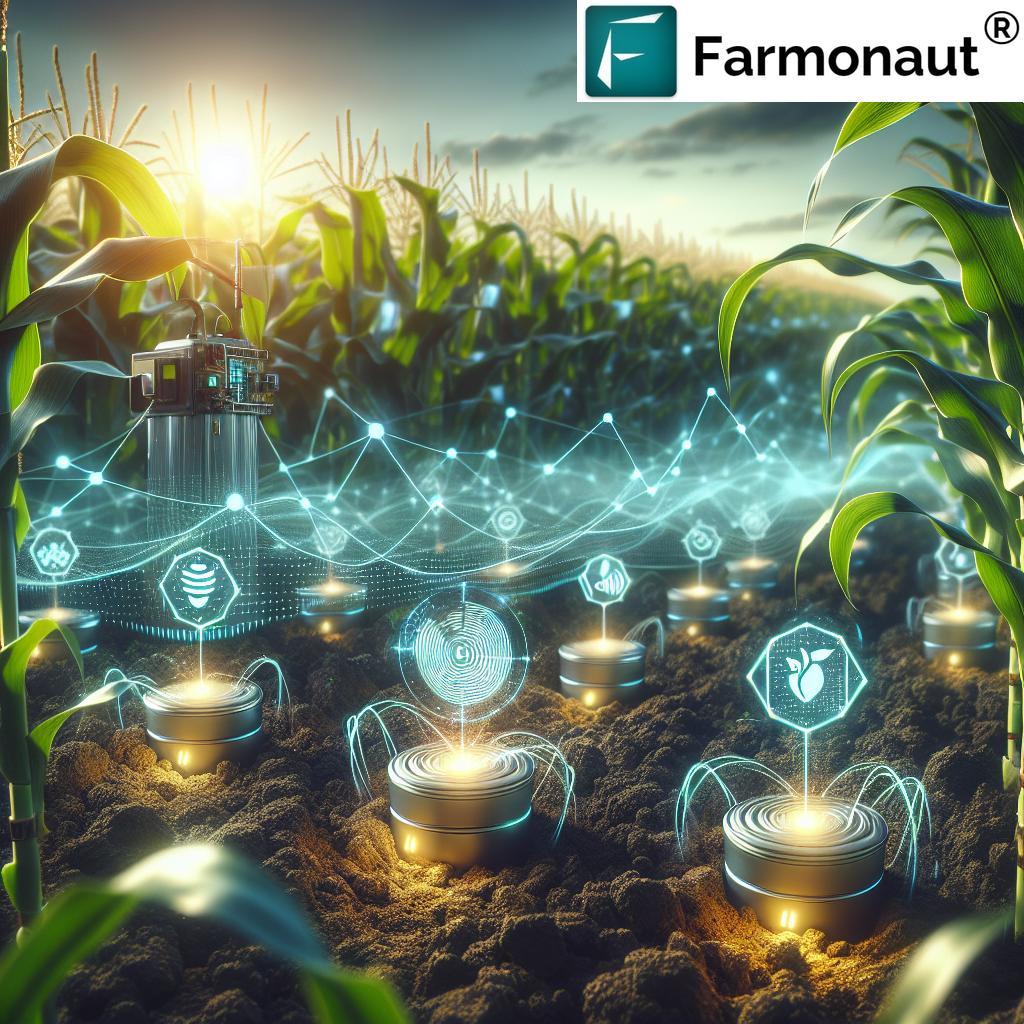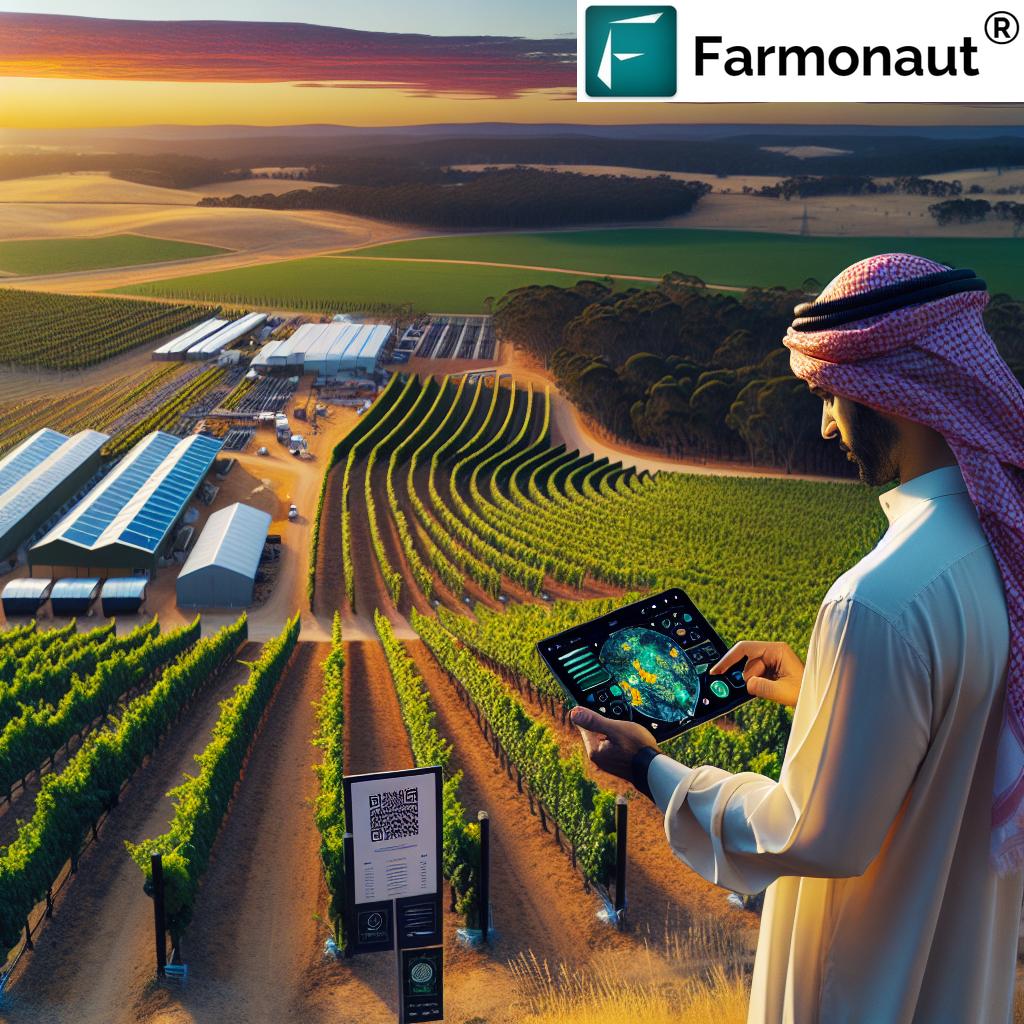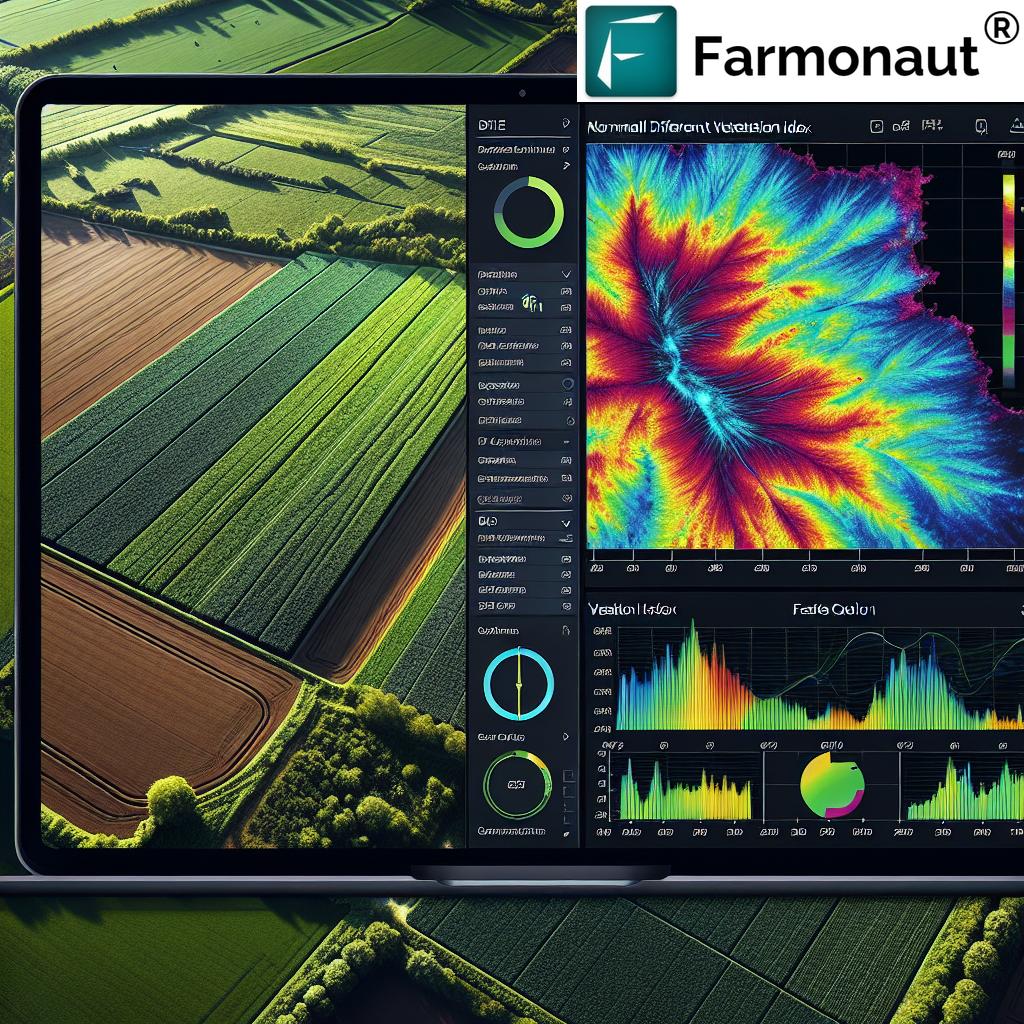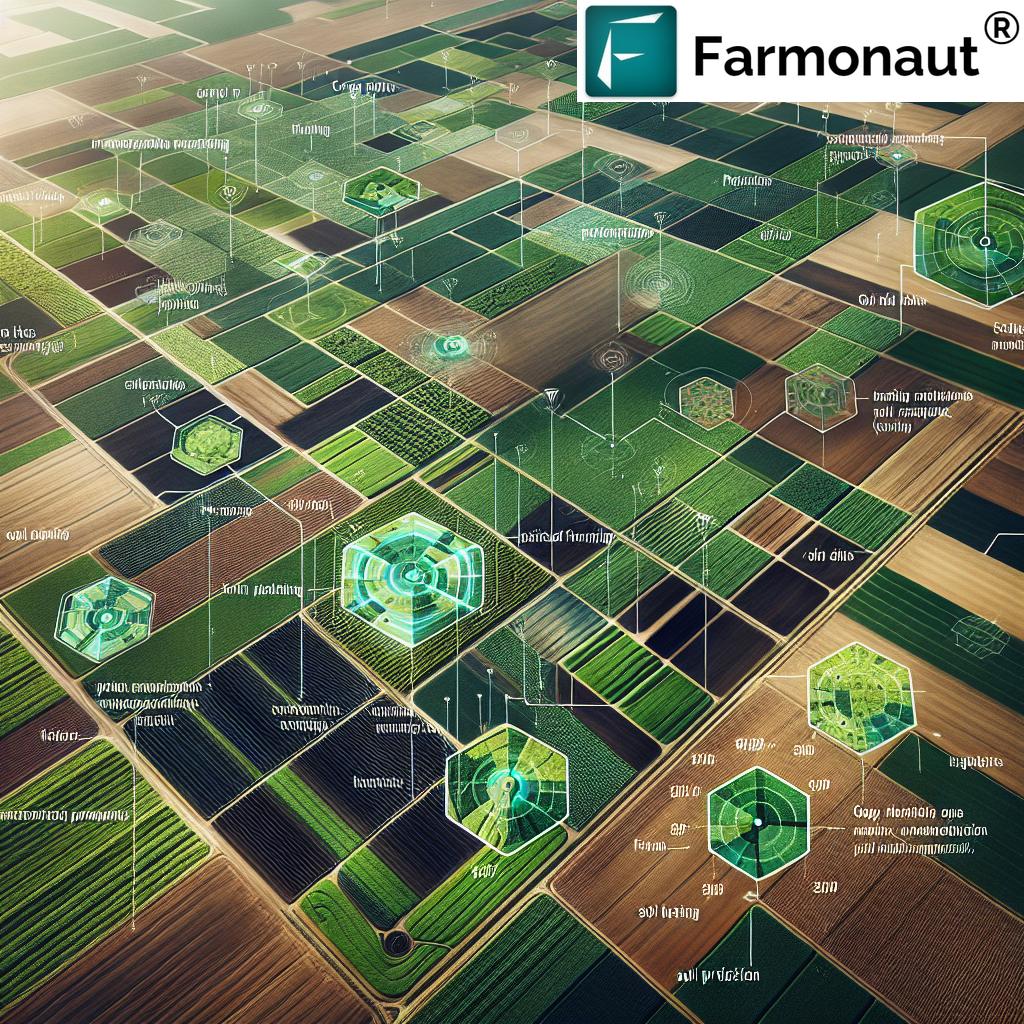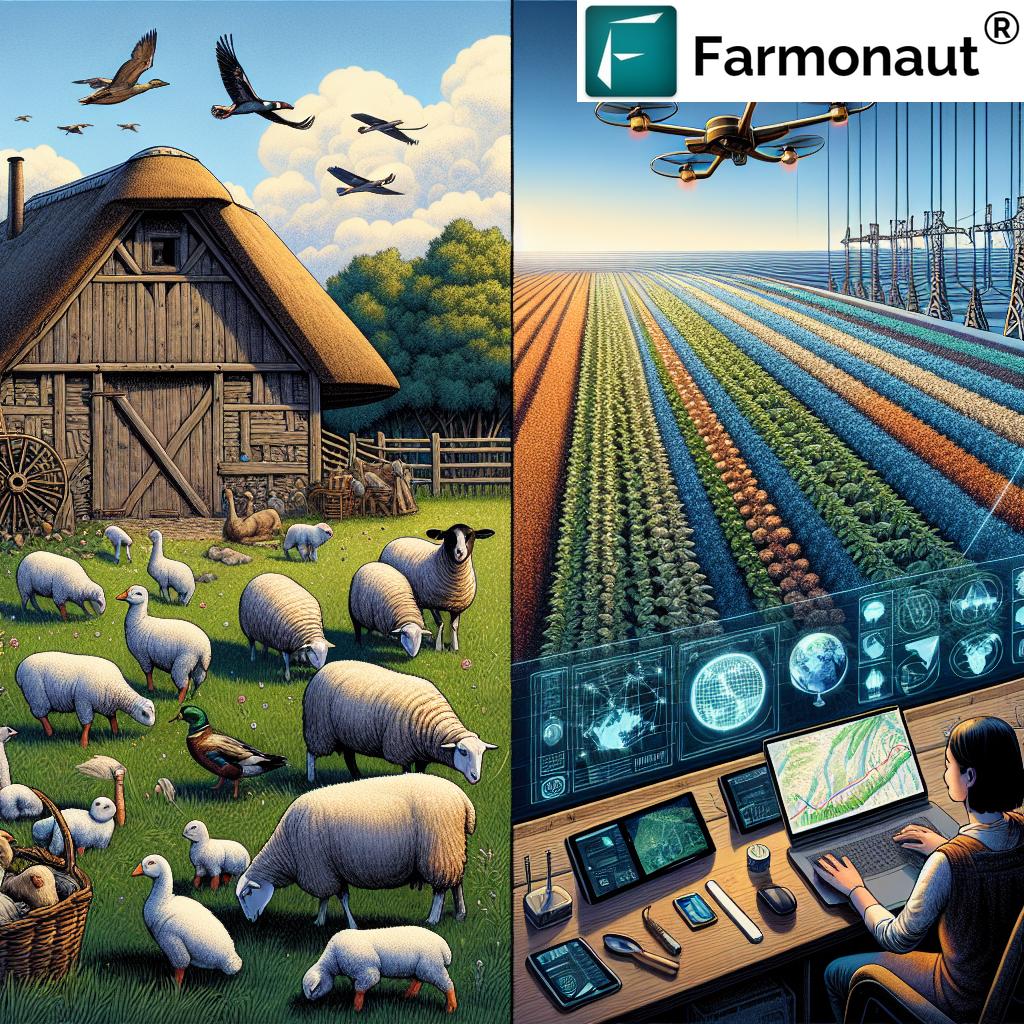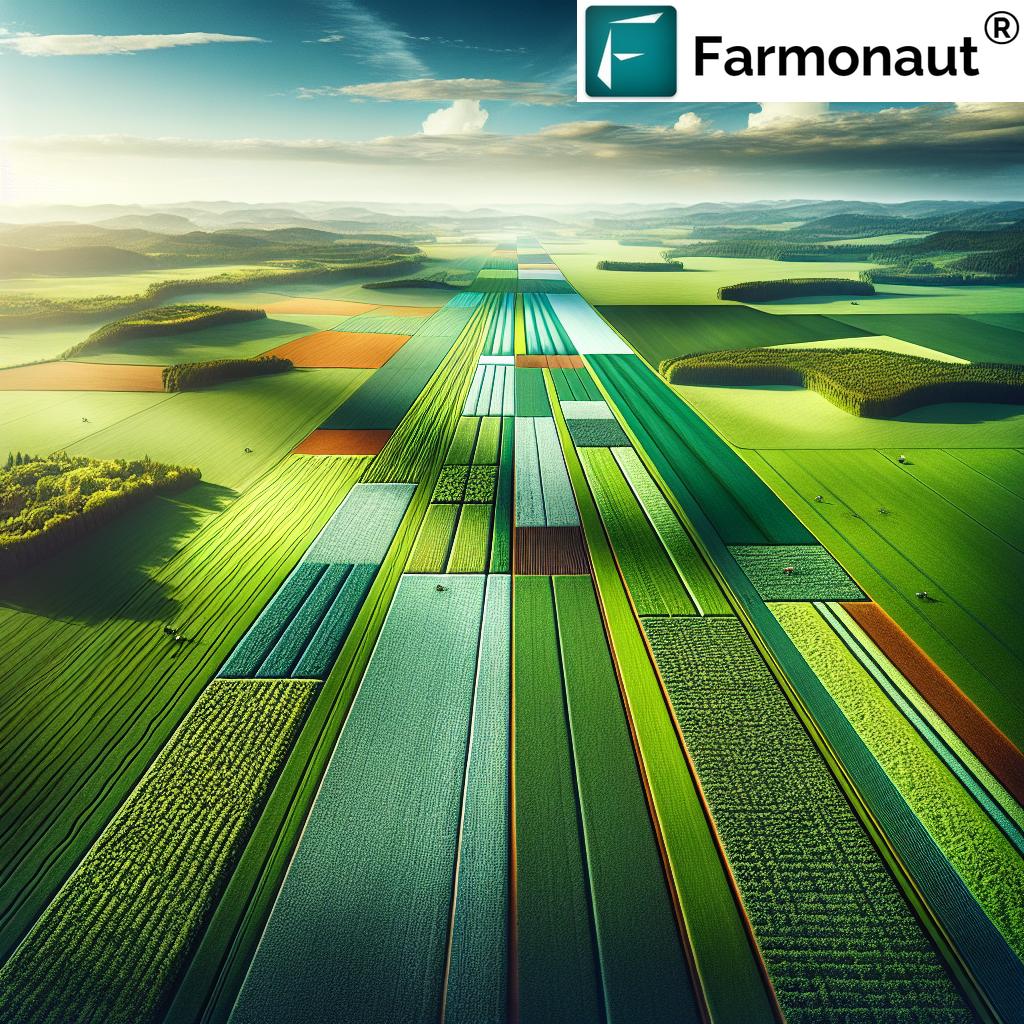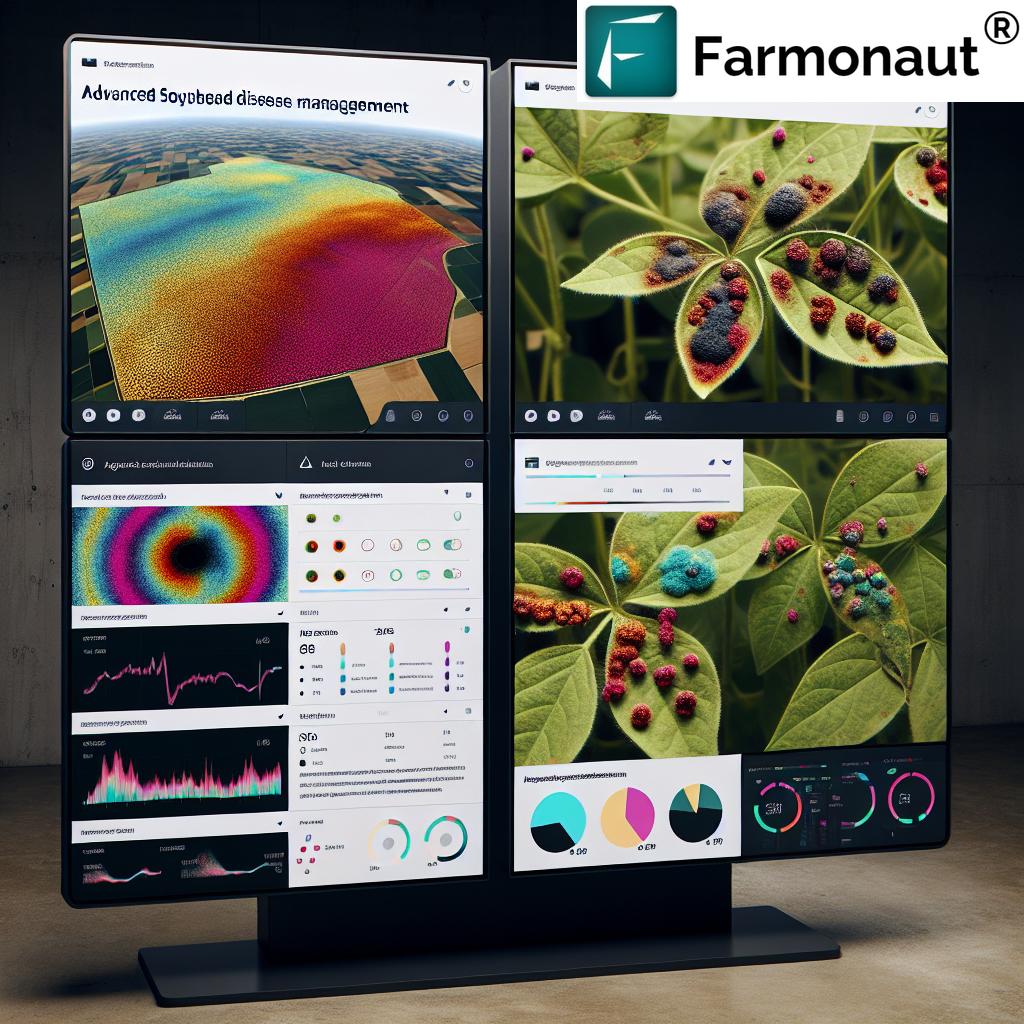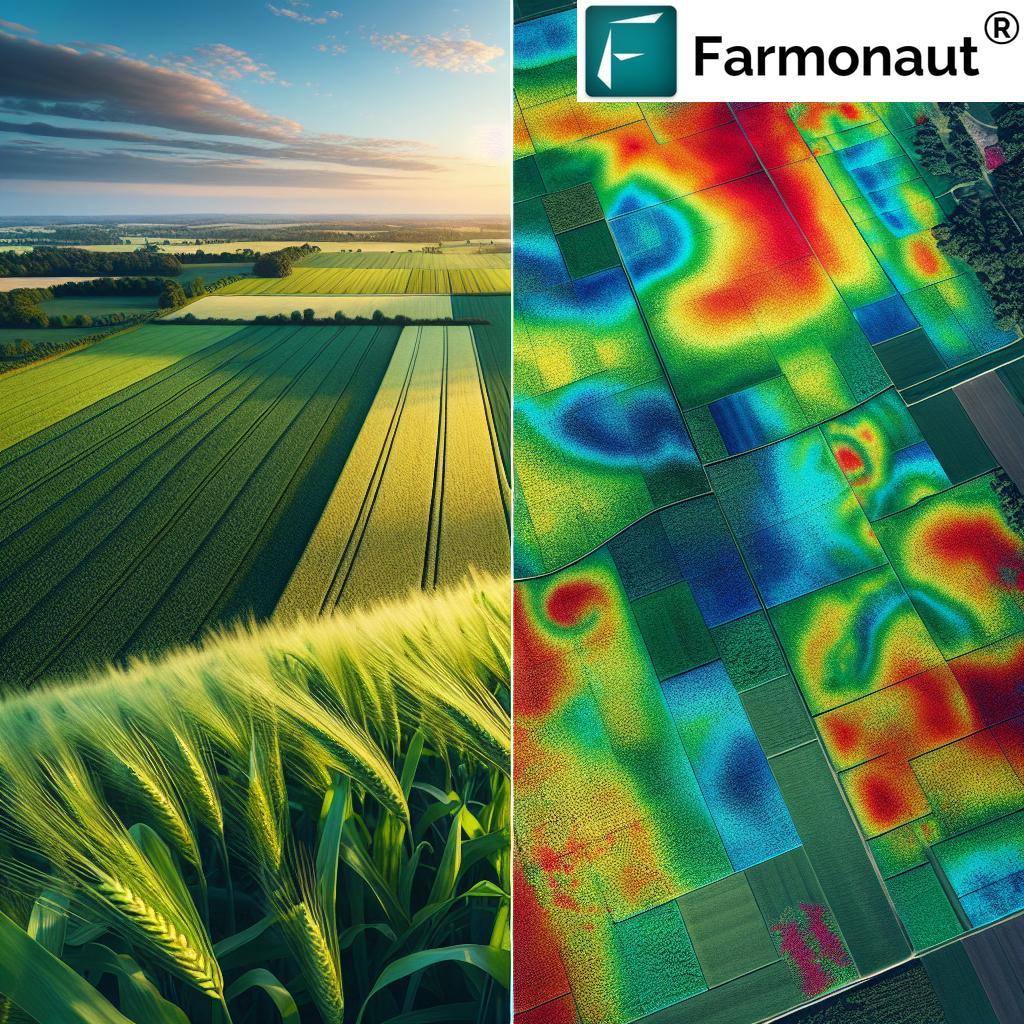Agriculture Innovation and Technology: 7 Shocking Trends
Introduction: Revolutionizing Modern Farming
Agriculture has always been the engine of human civilization, but the way we farm, grow, and deliver food is now transforming more rapidly than ever. As we face growing global food demand, climate change, and labor shortages, agriculture innovation and technology are stepping in to create a new era of smart, sustainable, and efficient farming. Today, artificial intelligence, robotics, satellites, drones, and digital tools are not only addressing age-old challenges—they’re opening up shocking new possibilities for productivity, resource management, and environmental stewardship.
Farmonaut, as a leader in precision agriculture and agricultural technology advancements, is dedicated to helping farmers worldwide leverage the most advanced, cost-effective solutions in this fast-evolving landscape. In this deep-dive, we’ll explore seven truly shocking trends in agricultural innovation. Along the way, we’ll highlight emerging opportunities, best practices, and how smart farming is changing the very nature of food production and rural livelihoods.
1. Precision Agriculture: Optimizing Every Inch of Farmland
What Is Precision Agriculture?
Precision agriculture—often called smart farming—is the application of advanced data-driven tools, such as GPS, GIS, and remote sensing technologies, to monitor, manage, and respond to the variability in fields. By collecting actionable data about soil health, weather conditions, moisture, and crop status, farmers can make precisely targeted interventions for water, nutrients, and pesticides. The result? Significant reductions in resource and chemical waste, maximized crop yields, and improved sustainability.
For example, by using remote sensing and satellite imagery, we can identify variability in crop health across large fields, ensuring treatments are applied only where needed. This approach is transforming both smallholder farms and large-scale agri-businesses globally, reducing costs and environmental impacts while enhancing food quality.
- Reduces fertilizer and pesticide waste and environmental runoff
- Improves resource efficiency: precise water and input management
- Allows predictive management using advanced AI in farming analytics
- Enhances soil health and crop resilience to climate stressors
At Farmonaut, our mission is to democratize this technology. We provide satellite-based precision agriculture tools for monitoring crop health, soil moisture, and field conditions—empowering farmers to act on real-time, actionable insights from their smartphones or desktops.
Focus Keyword Appearance: “Precision agriculture” is not a concept for the future; it’s a reality, and it’s making every drop, seed, and minute on the farm count.
Explore: Want more on how satellite imagery drives smart farming? Visit our API page for seamless integration into your agri-management systems.
2. Drones and Aerial Imaging: Eyes in the Sky for Crops
How Drones Are Changing Agriculture
Drones have ushered in a new era for drones in agriculture. Outfitted with multispectral and thermal sensors, high-resolution cameras, and precision GPS, these flying devices gather crucial data from the air—fast. The result is highly accurate aerial imagery that enables detailed analysis of crop health, soil variability, pest infestations, and water stress.
- Rapid field assessment after storms, floods, or droughts
- Timely identification of pest or disease outbreaks
- Targeted spraying of nutrients or pesticides, reducing input waste
- Elevation and soil condition mapping to guide irrigation and planting
Farmonaut’s platform supports integration with drone-collected data, turning raw aerial images into actionable crop management maps. We can upload and process these datasets alongside satellite and IoT sensor data for holistic, efficient farm management.
Benefits of Drone Technology:
- Faster, safer, more cost-effective monitoring
- Higher precision in crop assessment and interventions
- Mitigation of labor shortages in field scouting and management
- Reduction of the environmental footprint through efficient application of inputs
Ready to experience field level insights? Try the Farmonaut app today or download on Android or iOS.
3. Robotics and Automation: The Rise of Agri-Bots
The Transformation by Robotics in Agriculture
Perhaps the most visually remarkable technological shift is the introduction of robotics and automation into our fields. Robotics in agriculture is rapidly bridging the gap caused by labor shortages, empowering farms to automate physically intensive tasks (planting, weeding, harvesting, spraying) with near-perfect accuracy.
Autonomous tractors, robotic weeders, and harvesters equipped with precise sensors and AI-driven controls can work around the clock, maximizing operational efficiency and minimizing human error. Startups such as FarmWise have pioneered robots capable of identifying and eliminating weeds without damaging crops, reducing the need for chemical herbicides and making organic farming more scalable.
- Addresses severe agricultural labor shortages and rising costs
- Improves consistency and quality of work, reducing input use
- Enables scalable automation for repetitive and hazardous tasks
- Increases sustainability by reducing chemical inputs and environmental impact
Farmonaut’s Contribution to the Robotics Revolution
Farmonaut’s web and mobile platform allow seamless integration of third-party robotics and automation fleets with satellite health and field maps. Explore Fleet Management for large agri-businesses: More on Fleet Management & Monitoring
4. Internet of Things (IoT) in Agriculture: Precision with Real-Time Data
How IoT Connects the Farm Ecosystem
The Internet of Things in agriculture means a network of connected sensors and devices spread throughout fields and greenhouses, continuously monitoring everything from soil moisture, nutrient levels, and temperature to livestock health and weather conditions. When coupled with AI-powered analytics and mobile notifications, this empowers agronomists and farmers to make timely, evidence-based decisions that minimize waste and maximize yields.
- Data-driven irrigation systems: Prevent over- and under-watering, optimize resource use
- Remote sensor-based alerts for pest outbreaks or mechanical anomalies
- Granular climate monitoring for microclimate adaptation
- Integration with automation—triggering robots or drones for interventions
Farmonaut’s Jeevn AI combines satellite data with ground sensor data to offer real-time crop health monitoring and personalized advisory, whether you’re managing a single farm or thousands of hectares.
Learn more: For seamless digital farm transformation, explore large-scale farm management solutions with Farmonaut’s multi-field farm management suite for agribusinesses and organizations.
5. Artificial Intelligence (AI) and Machine Learning: Smart Analysis for Smart Farming
AI in Farming—The Data Revolution
The explosion of AI in farming has taken us to a new realm of predictive, prescriptive, and automated decision making. AI algorithms are now capable of sifting through massive troves of agricultural data (weather, satellite images, sensor metrics, crop yields, market trends) and delivering instant insights for crop planning, disease identification, and even yield forecasts.
- Early detection of crop diseases and pests through image recognition
- Yield predictions and planting/harvest optimization
- Resource allocation modeling—saving water and fertilizers based on need
- Customized, real-time advisory for individual farmers
At Farmonaut, AI and machine learning drive automated crop health scoring, personalized weather and risk alerts, and customized guidance to users—from irrigated rice fields in India to Greenhouse tomatoes in Egypt.
Discover truly data-driven planning with Farmonaut’s crop plantation and forest advisory solutions—combining AI, satellite, and IoT for unmatched decision support.
6. Controlled-Environment Agriculture (CEA): Cultivation Beyond Constraints
Controlled-Environment Agriculture (CEA): Farming of the Future
Controlled-environment agriculture (CEA) is redefining where and how we can grow crops. From innovative greenhouses to futuristic vertical farms, CEA allows precise control over temperature, humidity, CO2, lighting, and even root-zone nutrition. The result? Year-round production, better yields, and crops of consistent quality, independent of regional climate constraints.
- Up to 90% less water use versus traditional open-field cultivation
- Minimal or no pesticide requirements
- High land-use efficiency—stacked vertical growing, rooftop, and urban locations
- Consistent food supply, even in arid or hostile climates
Farmonaut supports CEA facilities by offering environmental monitoring, satellite analytics, and AI-powered resource management tools. This is critical for sustainable farming practices where precision is a must!
Did you know? Advanced monitoring of environmental parameters is crucial for large-scale greenhouse or indoor farm management. Learn about Farmonaut’s Carbon Footprinting features that help you measure and minimize your environmental impact.
7. Agrivoltaics: Solar Innovation Meets Agriculture
Agrivoltaics—Dual-Use Land for Food and Energy
In an age of dual crises—food and energy security—agrivoltaics is a breakthrough. This practice involves the integration of solar panels with crop cultivation, allowing us to generate renewable energy while also growing food. Panels offer shade that can protect crops from extreme heat, reduce water evaporation, and optimize land use, while feeding power back to farms or the grid.
- Reduces the farm’s carbon footprint and boosts energy independence
- Improves microclimate beneath panels, benefiting sensitive crops
- Overall land productivity increases—food and energy from a single field
- Supports rural resilience to climate change and market volatility
Smart grids, IoT monitoring, and remote management tools are rapidly making agrivoltaics a mainstream solution for sustainable farming, especially in sun-rich regions.
Learn more: Certify your sustainable farming practices and trace your farm’s carbon outputs with Farmonaut. See how our blockchain-based traceability and carbon tracking supports smarter, greener food chains.
Bonus Trends: Nanotechnology & Blockchain Transformations
Nanotechnology: Tiny Tools, Massive Impact
Nanotechnology applications are quietly revolutionizing farming. Nanofertilizers boost nutrient efficiency, reduce application rates, and minimize environmental damage. Nanosensors can detect soil health issues, pathogens, and input needs at sub-millimeter resolution, enabling surgical interventions.
- Reduced chemical runoff, pesticide use, and fertilizer wastage
- Highly targeted pest and disease control
- Healthier crops, improved yields, less impact on surrounding ecosystems
Blockchain in Agricultural Supply Chains: Transparency and Trust
Blockchain brings transparency, traceability, and data security to the agricultural supply chain. By recording every transaction—from planting and harvesting to transport and sale—on a decentralized ledger, producers and consumers can be sure of food origin, authenticity, and even sustainability credentials. For farmers, it means higher prices by cutting out intermediaries and fraud.
- Immutable food traceability—from seed to supermarket
- Greater trust for retailers, regulators, and consumers
- Reduced risk of fraud and supply chain disruptions
- Enables direct compensation for farmers
To see how Farmonaut’s blockchain features provide total product traceability, visit: Blockchain-enabled Agricultural Traceability with Farmonaut.
Comparative Trends Table: Agriculture Technological Innovations
| Trend/Technology | Description | Estimated Adoption Rate (2024, Global) | Potential Yield Increase (%) | Env. Impact (Reduction in Input Use) | Example Application |
|---|---|---|---|---|---|
| AI in Farming | Data-driven decision support, disease prediction, yield optimization | 30% | 10–20% | 15% fertilizers, 18% pesticides | AI-powered advisory systems (Farmonaut Jeevn AI) |
| Drones in Agriculture | Aerial imaging, rapid crop and soil assessment; targeted spraying | 17% | 8–12% | 12% water, 10% chemicals | Real-time aerial surveys of pest infestations |
| Robotics in Agriculture | Autonomous machines for sowing, weeding, harvesting | 9% | 12–18% | 20% labor, 15% inputs | Robotic automated weeders (FarmWise) |
| IoT Sensors | Real-time monitoring of soil, weather, livestock | 23% | 6–11% | 18% water, 14% fertilizer | Soil moisture sensors for drip irrigation |
| Satellite Imagery | Extensive field and crop monitoring from space | 22% | 7–15% | 17% operational inputs | NDVI-based crop health tracking (Farmonaut) |
| Data Analytics | Predictive & prescriptive insights from big data | 35% | 10–19% | 13% resource use | Yield prediction dashboards |
| Automated Machinery | Tractors, planters, and harvesters with advanced controls | 15% | 9–16% | 19% labor, 11% fuel | Self-driving harvesters |
Farmonaut: Making Precision Agriculture Accessible for All
With so many fast-moving technological advancements in agriculture, the biggest challenge is making these innovations practical, affordable, and easy to use for all farmers, regardless of location and scale. This is where Farmonaut provides unmatched value—with advanced, satellite-based farm management solutions available across Android, iOS, web APIs, and direct platform access.
Farmonaut’s Technology Suite:
- Satellite-Based Crop Health Monitoring: Harness global-scale, real-time NDVI, EVI, and moisture data to monitor crop health, inform irrigation, and manage precision fertilizer/pesticide application—right from your smartphone or desktop.
- Jeevn AI Advisory System: Receive AI-driven, personalized farm management tips, custom weather forecasts, and pest/disease alerts that are tailor-made for your farm and crop season.
- Blockchain-Based Product Traceability: Ensure every kilogram of produce is tracked from field to supermarket using blockchain, establishing consumer trust and higher market value. Learn about Farmonaut Traceability.
- Fleet & Resource Management: Monitor machinery, optimize usage, reduce operational costs, and increase productivity with tools built for both small and large agri-businesses. Check Farmonaut Fleet Management.
- Carbon Footprinting: Track your farm’s emissions and sustainability impact at every stage with Farmonaut’s Carbon Footprinting.
- API Access & Developer Tools: Integrate Farmonaut insights directly into your digital products or management systems. API is available at Farmonaut API & Developer Docs.
- Access Financing: Use satellite and AI verification to simplify crop loans and insurance claims—reducing fraud and supporting financial inclusion.
Who Can Benefit from Our Platform?
- Individual Farmers: Real-time crop monitoring, personalized advice, and affordable access to precision agriculture—right from their phone.
- Agribusinesses: Efficient large-scale plantation & fleet management powered by AI, automation, and satellite data.
- Government & NGOs: Large-scale monitoring, yield forecasting, and transparent policy implementation.
- Financial Institutions: Rapid, remote farm verification for loans & insurance, fighting fraud and enabling more rural credit.
- Corporate Clients: Blockchain-based supply chain tracking for food, textiles, and green certifications.
If you manage forests, plantations, or require large-scale field management, learn more: Farmonaut’s Large Scale Farm Management Solutions
The Future of Smart Farming: Prospects & Challenges
What’s Next in Agriculture Innovation?
- Deeper digital integration: Edge AI, quantum computing, and biological machine learning could unlock new levels of prediction and control
- Fully autonomous farms: From planting to logistics, the rise of robotics and IoT will reimagine the workforce
- Hyper-personalized agronomy: AI will deliver hour-by-hour, plot-by-plot recommendations for everything from irrigation to pest management
- Net-negative agriculture: Technology will help us farm more sustainably than ever, minimizing emissions and restoring natural resources
- Direct integration with food systems: Blockchain and traceability will make farm-to-table transparent, efficient, and trustworthy
Challenges We Must Address:
- Data privacy & digital literacy: Farmers must be empowered with education, training, and clear safeguards.
- Access & affordability: Making smart farming accessible for smallholders, not just the largest commercial players.
- Infrastructure: Reliable connectivity, energy, and service support is needed for rural adoption.
- Sustainability: Balance between maximizing yields and protecting our shared environment.
With bold steps and ongoing innovation, the future for farmers, consumers, and the planet is bright.
FAQ: Agriculture Innovation, Technology, and Precision Trends
-
What is precision agriculture, and why is it important?
Precision agriculture uses advanced data and technology (such as satellites, drones, IoT sensors) to guide targeted actions on farms, improving efficiency, reducing waste, protecting the environment, and boosting yields. It’s crucial for addressing growing food demands, labor shortages, and sustainability challenges in farming. -
How do drones benefit modern agriculture?
Drones provide real-time, high-resolution imagery of crops and soil, enabling farmers to monitor health, detect problems early, and apply treatments much more accurately. This leads to higher productivity, lower costs, and better management of land and resources. -
Can small farms use advanced agricultural technologies?
Absolutely. Farmonaut is dedicated to making satellite monitoring and precision agriculture affordable and accessible for farms of any size. With mobile apps and flexible subscriptions, even smallholders can achieve the benefits of data-driven management. -
How does AI help farmers?
AI processes large and complex sets of agricultural data to provide actionable recommendations, including when to water, fertilize, or apply pest control, forecast yields, and detect emerging threats—simplifying complex decisions and improving farm outcomes. -
What role does blockchain play in agriculture?
Blockchain ensures tamper-proof traceability, tracking crops from cultivation through distribution, offering transparency, improved food safety, and better prices for producers. Explore Farmonaut’s blockchain traceability tools for more. -
Is there an environmental benefit to integrating technology in agriculture?
Yes. Technologies like AI, IoT, robotics, and satellite imagery significantly reduce the use of water, fertilizers, and chemicals, lower greenhouse gas emissions, and improve soil health—making farming much more environmentally sustainable.
Conclusion: Embracing Technological Change in Agriculture
We are living in a truly transformative era for food and farming. Digitalization, smart machines, and powerful analytics are moving agriculture from guesswork to precision, from reaction to proactivity, and from isolation to collaboration.
Farmonaut stands at the forefront of these agricultural technology advancements, striving to make the future of smart farming inclusive, affordable, and sustainable for everyone. Whether you’re a smallholder looking to monitor crop health, a business seeking fleet efficiency, a policymaker driving sustainable farming practices, or a corporate client demanding transparent supply chains, our platform delivers the insights and tools needed to prosper in a changing world.
As precision agriculture moves from “shock” to standard, let’s work together towards a future where technology doesn’t replace tradition—it enhances it, helping us feed a growing world while protecting our environment for generations to come.



